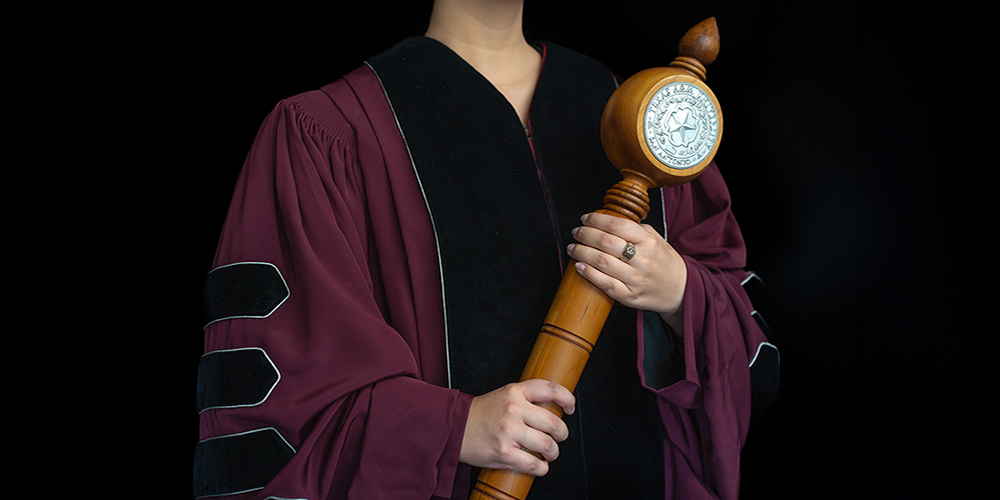
The University Mace
A medieval weapon, maces have long been a symbol of authority in Europe, often carried by members of the king’s guard in England and France. As weapon technology changed, maces became less martial and more decorative, often found with delicate gold filigree and crests of office. The weight of authority has remained associated with maces to this day; maces are often seen in ceremonial processions and rituals in both universities and governmental bodies, a symbol of jurisdiction and a representation of the need to protect and nurture the fragile search for knowledge. Carried by a senior member of the faculty, the mace rests in traditional stand for the duration of the ceremony.
The mace of Texas A&M University- San Antonio was custom crafted by Tom Boley, an independent woodworker in Virginia. Carved out of cherry with mesquite wood accents, the mace depicts various University symbols. The small ball at the bottom represents the Texas A&M University System, flaring quickly to the shaft- which, as the foundation and strength of the mace itself, represents the combined strength of the student body. There are ten rings around the shaft to represent the ten universities in the System. The shaft expands as it goes upward, representing the steady growth of knowledge by the University students and expansion of the San Antonio campus. The four rings under the ball represent the foundation for success for each student: Dynamic teaching, Scholarship, Research, Public Service. The medallion is carved with the University seal to represent the San Antonio campus and matches the medallion worn by the president. The ball represents the faculty and staff who continuously strive to help the students to be successful. The two rings above the medallion represent how, upon graduation, the graduates will have been inspired to lifelong learning and responsible global citizenship. Finally, the finial at the top points to the future for all.
